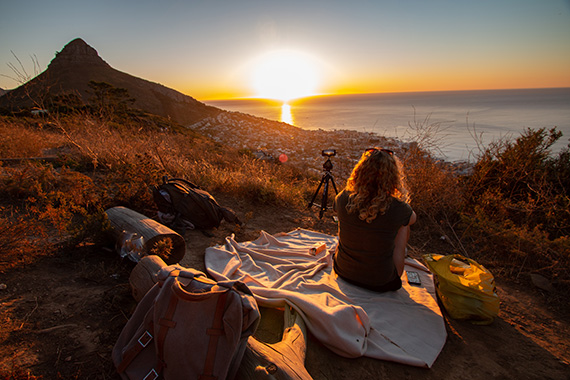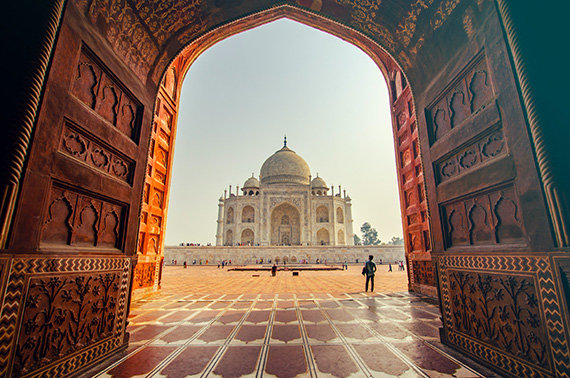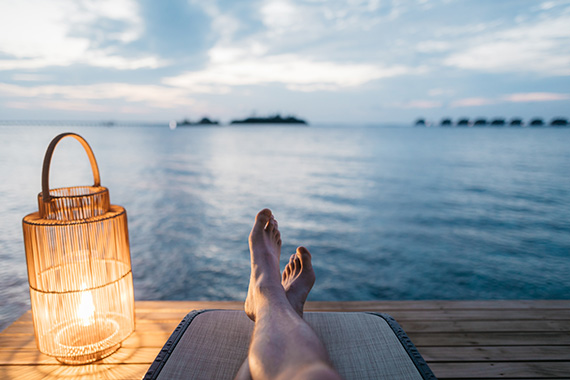When you’re packing photography equipment for a holiday, it’s hard to decide what to take. You want to take enough to get good photos, but not so much that it weighs you down or takes up too much space in your luggage.

Photo by Olivier Brugger
If you’re going on a holiday with a specific photographic intent in mind, such as safari, then its relatively easy to decide what lenses to take. But if you’re going on a standard holiday to the city or country, where you’ll likely come across a multitude of different photographic situations, it can be hard to decide which lenses to take, and which to leave at home.
This article covers a few different options you may want to consider when deciding which lenses you should take to use with your digital SLR camera on holiday.
Lightweight creative
- Small prime lens
For the ultimate in terms of traveling light with a Digital SLR camera, consider bringing just a single prime (fixed focal length) lens, e.g. 24mm, 35mm, 50mm, or 85mm. Although you may miss the convenience of a zoom lens, remember that you can still ‘zoom with your feet’ when using a prime lens.
However, when using a single prime lens, the purpose should not really be to try and get the same shots as you would when using a zoom lens. Instead, it should make you think differently, and you should try to take shots using the fixed focal length to your advantage.
If you do decide to try and push your creativity by shooting with only a single focal length, I would recommend that you try this out before you go on holiday. This way you can see what sort of shots work with that particular lens, and which sorts of shots don’t, before you leave.
Besides forcing you to challenge your creativity, shooting with a single prime lens has other benefits:
- Prime lenses are typically smaller than zoom lenses.
- With no lens changes you shouldn’t have to worry about your camera sensor getting dirty
- Prime lenses typically have fast maximum apertures, e.g. f/1.4. This enables you to take shallow focus shots that you can’t get with slower zoom lenses.

Photo by Sylwia Bartyzel
The obvious disadvantage is that there will be some shots you might want to make but just can’t because you don’t have the right focal length and ‘zooming with your feet’ is not possible. e.g. If you bring a 50mm prime lens you won’t be able to take a wide-angle shot of your hotel room.
Lightweight convenient
- Walk around (Medium wide – medium telephoto) zoom
For convenience it’s hard to beat a walk around zoom lens. These are available in quite a large range of focal lengths, some more modest e.g. 24-70mm (for a full frame DSLR) or 17-50mm (for a APS-C DSLR), or some quite extreme (known as ‘superzooms’), e.g. 28-300mm (for a full frame DSLR) or 18-200mm (for a APS-C DSLR).
Generally the shorter the zoom range, the higher the quality of image the lens will produce, but you loose the convenience of having the longer zoom.
These lenses go from a medium wide angle to a medium telephoto, allowing you to capture most things from city streets, to portraits, to larger wildlife. There may still be some situations where you find you want a wider or longer focal length than your lens, but a walk around lens should cover most situations you come across.
Although convenient, these lenses tend to have a smaller maximum aperture than prime lenses. This means they are not quite as suited for low light photography (though with today’s high ISO capable cameras this is less of a concern than it used to be).
A walk around zoom lens will likely produce worse image quality than a prime lens, but the quality should still be plenty enough for most print sizes.
Heavyweight all bases covered
- Walk around zoom + wide angle zoom + telephoto zoom + (optional) normal prime
If you want to cover virtually any situation you come across, the above selection of lenses should do well. It won’t cover every single situation, to do that you’d need to bring so many lenses you’d need a Sherpa to lug them around for you. But these lenses will cover the large majority of photographic opportunities you’re likely to come across, without you having to be a body builder to carry them.
The walk around zoom, as discussed above, will probably be your primary lens, and cover most situations.
A wide angle zoom lens, such as a 10-20mm, 12-24mm, 14-24mm, 16-35mm, or 17-40mm, will prove great for getting in the vastness of a beautiful country scene, city square, or bustling market. The super wide angles of these lenses can also be used to great creative effect, emphasizing objects in the foreground and giving a great sense of perspective.
The wide angle zoom lens will also come in useful in tight spots where you want to get in an entire scene, but can’t move any further back, for example a small shopping alley.
A telephoto zoom, such as a 70-200mm or 70-300mm lens will come in useful for taking photos of things in the distance, or wildlife. They are also useful for picking out details higher up on buildings, and can make reasonable portrait lenses as well. You probably won’t need the reach of a telephoto zoom lens very often, but it’s nice to have it when you need it.
If you are using a superzoom lens (e.g. 18-200mm or 28-300mm) for your walk around lens, then you may decide not to have the extra weight of a telephoto zoom. But a smaller focal length range walk around lens (e.g. 17-50mm or 24-70mm) and a telephoto zoom lens will provide superior image quality compared to a superzoom.

Photo by Simon Migaj
To round off your kit, you may want to consider adding a normal (e.g. 50mm) fast aperture (e.g. f/1.4) prime lens. Although it will probably double-up on part of the focal length covered by the walk around lens, the faster aperture of the prime lens makes it more suitable for portraits and photos where you want to use shallow depth of field.
This kit will be quite a bit heavier than a single lens, but should fit in a smallish bag without too much trouble. And it gives you added flexibility compared to just using a single lens.
Medium-weight most bases covered
- Wide angle prime + normal prime + medium telephoto prime
If you like your sharp and fast prime lenses, try bringing a wide angle prime e.g. 14mm, 21mm, or 24mm, a normal prime, e.g. 35mm or 50mm, and a medium telephoto prime, e.g. 85mm or 135mm.
Not quite as convenient as a selection of zoom lenses, you’ll have to ‘zoom with your feet’, but a selection of prime lenses will give you the ultimate in image quality. The wide aperture of prime lenses (particularly the 50mm and 85mm lenses) also allow you to take advantage of the shallow depth of field that slower zooms can’t match.
Depending on the aperture of your prime lenses, if they are fast e.g. f/1.8 – f/2.8 you should find they take up less room than the equivalent zoom lenses. If you have superfast prime lenses e.g. f/1.2 – f/1.4 then they may be as heavy or heavier than zoom lenses covering the same focal lengths, but then of course, zoom lenses can’t match those superfast apertures.
The main problem with using only a selection of prime lenses is that you can’t cover the telephoto end very well unless you don’t mind the large and heavy telephoto primes. You probably don’t want to be carrying one of these around with you on holiday, unless maybe you are visiting a zoo or wildlife reserve.

Photo by Kevin Schraer; ISO 500, f/0.0, 1/125-second exposure.
I would suggest that 85mm or 135mm will probably be enough to cover most situations where you want a longer focal length. You may miss some shots where a longer focal length is needed, but you will also be able to get some shots in other situations that a zoom would miss (e.g. very low light or very shallow depth of field).
Hopefully the above has given you some ideas of what lenses to take on holiday with you.
About the Author:
Dave Kennard writes for discoverdigitalphotography.com, offering advice on a wide range of subjects, including landscape, portrait, and macro photography.
Go to full article: Planning and Packing Camera Lenses for a Holiday or Trip
What are your thoughts on this article? Join the discussion on Facebook
PictureCorrect subscribers can also learn more today with our #1 bestseller: The Photography Tutorial eBook
The post Planning and Packing Camera Lenses for a Holiday or Trip appeared first on PictureCorrect.
from PictureCorrect https://ift.tt/35YzoGg
via IFTTT






0 kommenttia:
Lähetä kommentti